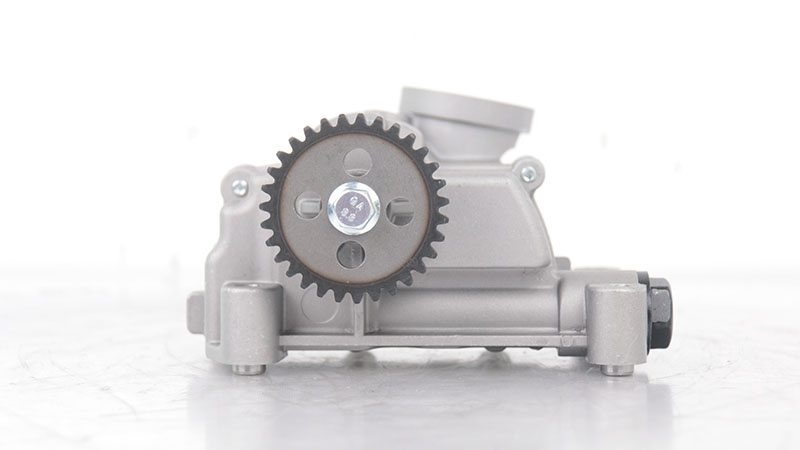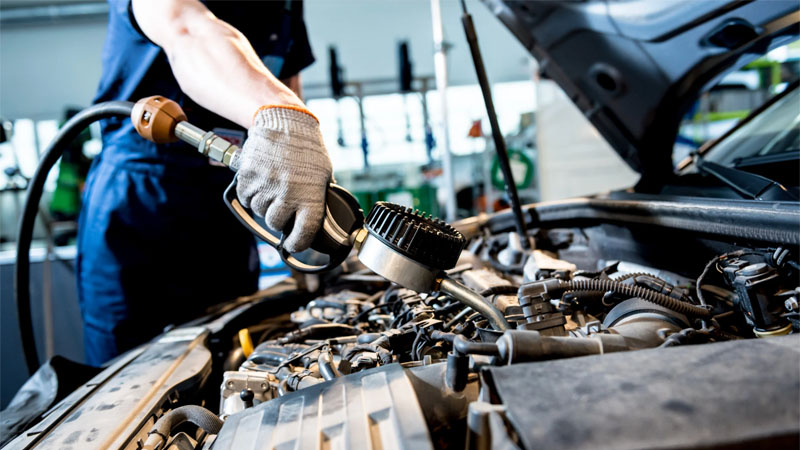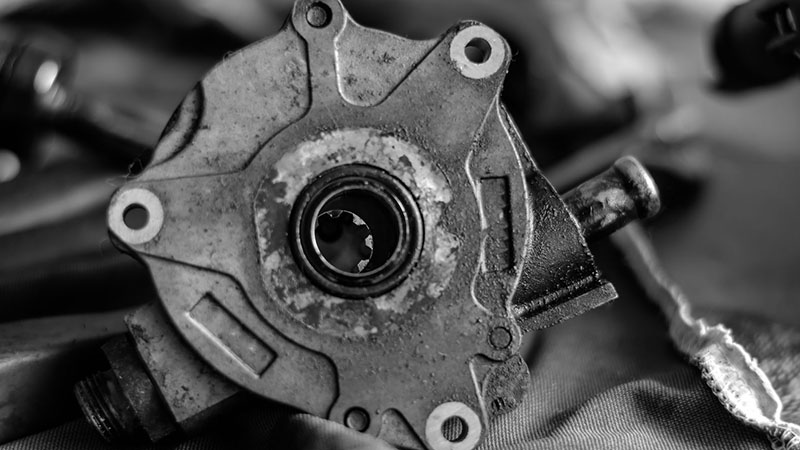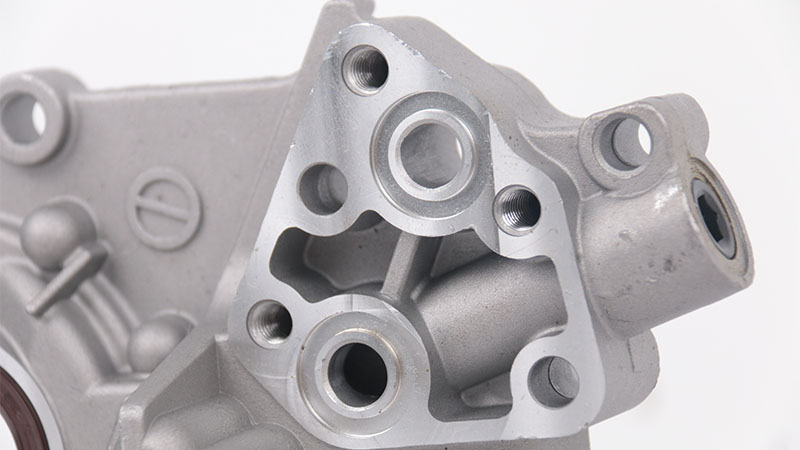When it comes to engine health, the oil pump doesn’t usually get much attention — until it fails. This small but essential part keeps oil flowing to critical engine components, preventing wear and overheating. If it stops doing its job, you’re looking at expensive repairs or even a complete engine replacement.
So, how much does it actually cost to replace an oil pump? What signs should you watch out for, and is it something you can tackle yourself? Let’s break it down.

How Much Does It Cost to Replace an Oil Pump?
Replacing an oil pump can be more expensive than many expect. According to recent data, the full cost (parts + labor) typically falls between $390 and $1,600 for most standard passenger vehicles. For larger trucks, luxury, or high-performance cars, costs can easily reach $1,500 to $2,400+ depending on complexity.
Parts: A new oil pump generally costs $50 to $500, depending on whether it’s OEM or aftermarket, and if additional components like gaskets or pickup tubes are required. For many mid-range cars, expect $100–$400 just for the pump.
Labor: Mechanics often charge $300 to $1,200+, depending on how long it takes and how difficult it is to reach the pump. Simpler engines might require 3–5 hours of labor, while larger V8s or engines with complex layouts can take 6–10+ hours.
Here’s a quick breakdown of typical oil pump replacement costs by vehicle type (based on J.D. Power and RepairPal data):
| Vehicle Type | Typical Cost Range (Parts + Labor) | Notes |
|---|---|---|
| Compact Car / Sedan | $400 – $800 | Lower labor hours, smaller oil pumps; common in Toyota Corolla, Honda Civic. |
| Midsize Car / SUV | $700 – $1,200 | More labor required, parts slightly higher; examples include Honda Accord, Ford Escape. |
| Full-Size SUV / Pickup Truck | $1,200 – $2,000+ | Larger engines and more complex disassembly; e.g., Chevy Silverado, Ford F-150. |
| Luxury / Performance Car | $1,500 – $2,400+ | Expensive OEM parts, higher shop labor rates, complex layouts (BMW, Mercedes, Audi). |
If you’re quoted over $1,200 for a standard vehicle, it’s worth asking for a detailed breakdown of parts and labor. Sometimes extra costs reflect additional repairs (like replacing gaskets or cleaning sludge), but it’s always smart to confirm exactly what you’re paying for.

What Are the Symptoms of a Failing Oil Pump?
Oil pumps rarely fail all at once. More often, they weaken over time and give off warning signs that lubrication isn’t happening as it should. Ignoring these red flags can quickly lead to severe and costly engine damage.
Common symptoms include:
- Low oil pressure warning light — often the first sign that the pump isn’t maintaining proper pressure.
- Ticking or tapping noises — valvetrain parts aren’t getting enough lubrication, especially noticeable at startup.
- Engine overheating — poor oil circulation increases friction and heat, even if the cooling system is working.
- Metal shavings in oil — indicates internal engine wear due to insufficient lubrication.
- Unstable oil pressure gauge readings — fluctuating or slow pressure buildup suggests the pump is struggling.
To make it easier to spot the warning signs, here’s a quick reference table:
| Symptom | Possible Cause |
|---|---|
| Low oil pressure warning light | Weak oil pump, low oil level, or faulty sensor |
| Ticking/tapping noises | Valvetrain parts not getting enough lubrication |
| Engine overheating | Poor oil circulation causing excess friction and heat |
| Metal shavings in oil | Internal engine wear from lack of lubrication |
| Unstable oil pressure gauge | Pump struggling to maintain consistent flow |
If you notice one or more of these issues, it’s best to have the oil pump and lubrication system inspected right away. Acting early could mean the difference between a straightforward repair and catastrophic engine failure.

Are Oil Pumps Easy to Replace?
Unfortunately, no — replacing an oil pump isn’t a quick or simple repair. Unlike changing spark plugs or a battery, it’s a labor-intensive job that requires significant engine disassembly. At a minimum, the process involves:
- Draining the engine oil so the pan and pump can be accessed.
- Removing the oil pan, which may be straightforward on some cars but can require lifting the engine or even dropping the subframe on others.
- Accessing timing components in certain engines, since the pump may be integrated with or driven by the timing chain or belt.
- Removing the old pump and gasket and carefully installing the new unit with the correct torque settings.
- Reassembling the engine — reinstalling the pan, resealing gaskets, refilling the oil, and testing oil pressure.

For professional mechanics, this job typically takes 4–8 hours, but on trucks or luxury cars it can stretch beyond 10 hours because of complex layouts.
For DIYers, the challenge is more than just time: without a lift, specialty tools, and experience, mistakes like leaks or misalignment can starve the engine of oil and cause catastrophic damage.
While doing it yourself may save a few hundred dollars in labor, the risk usually outweighs the savings — making professional replacement the safer choice for most drivers.
DIY vs Professional Oil Pump Replacement
| Option | Pros | Cons |
|---|---|---|
| DIY Replacement | • Saves $300–$800 in labor costs • Suitable for experienced DIY mechanics | • Requires lift & specialty tools • Takes 6–10+ hours • High risk of leaks or errors • Mistakes can cause major engine damage |
| Professional Replacement | • Done with proper tools & expertise • Warranty/guarantee on work • Safer and less downtime | • Higher upfront cost ($300–$1,200 in labor) • Vehicle must stay at the shop |
Can I Drive a Car With a Bad Oil Pump?
The short answer: you shouldn’t.
Without proper oil pressure, critical parts like the crankshaft, bearings, and pistons lose lubrication. In just minutes, friction builds, leading to rapid wear, overheating, and possibly a full engine seizure. Unlike some issues that let you limp to a shop, a failing oil pump gives you almost no margin for error. Even a short drive can cause irreversible damage.
⚠️ Ignoring oil pump failure can lead to:
- Accelerated wear on internal components
- Severe overheating and warped cylinder heads
- Complete engine seizure requiring full replacement
If you suspect pump failure, the safest move is to stop driving and have the car towed — a far cheaper option than replacing an entire engine.

How Often Does an Oil Pump Go Bad?
Oil pumps are generally durable and often last as long as the engine itself, but that isn’t always the case. With good maintenance, many will run reliably for 50,000 to 150,000+ miles, though reaching the higher end depends heavily on engine design, driving habits, and how well the oil system is cared for. In some vehicles, the pump may never need replacement; in others, poor maintenance or harsh conditions can lead to early failure.
What Can Shorten Pump Lifespan
- Poor oil maintenance: Skipping oil changes or running dirty/low oil allows contaminants to circulate, wearing out gears and bearings.
- Wrong oil viscosity: Oil that’s too thick in cold weather or too thin for the engine spec forces the pump to work harder or fail to build pressure.
- Sludge buildup or overheating: Heat and sludge can clog oil passages, straining the pump and reducing efficiency.
- High-mileage wear: Even with care, years of service can wear down internal components.

How to Extend Pump Life
- Stick to manufacturer-recommended oil change intervals (or shorter in dusty, hot, or stop-and-go conditions).
- Always use the correct oil grade and viscosity for your vehicle.
- Watch the oil pressure gauge or warning light for unusual changes.
- Fix oil leaks promptly to avoid running low on oil.
With proper care, an oil pump can easily exceed 150,000 miles, and in many engines it lasts the entire lifespan. But neglecting oil changes or ignoring overheating can turn a long-lived part into an early and costly failure.

Conclusion
The oil pump may not be the most visible part of an engine, but it’s one of the most critical. Replacement typically costs $300–$1,000, and neglecting the issue can lead to catastrophic engine failure and much higher repair bills. If you notice warning signs such as low oil pressure, unusual noises, or overheating, acting quickly can save thousands and keep vehicles running reliably.
At Nanjing Woda Auto Technology Co., Ltd., we specialize in supplying premium engine parts — including oil pumps, crankshafts, cylinder heads, and complete engines — to distributors, wholesalers, and repair shops worldwide.
With over 25 years of industry experience, we deliver reliable products, competitive pricing, and global shipping tailored to B2B customers.
Looking for a dependable partner for oil pumps or other engine components? Request a quote today and work with a supplier trusted by businesses around the world.






